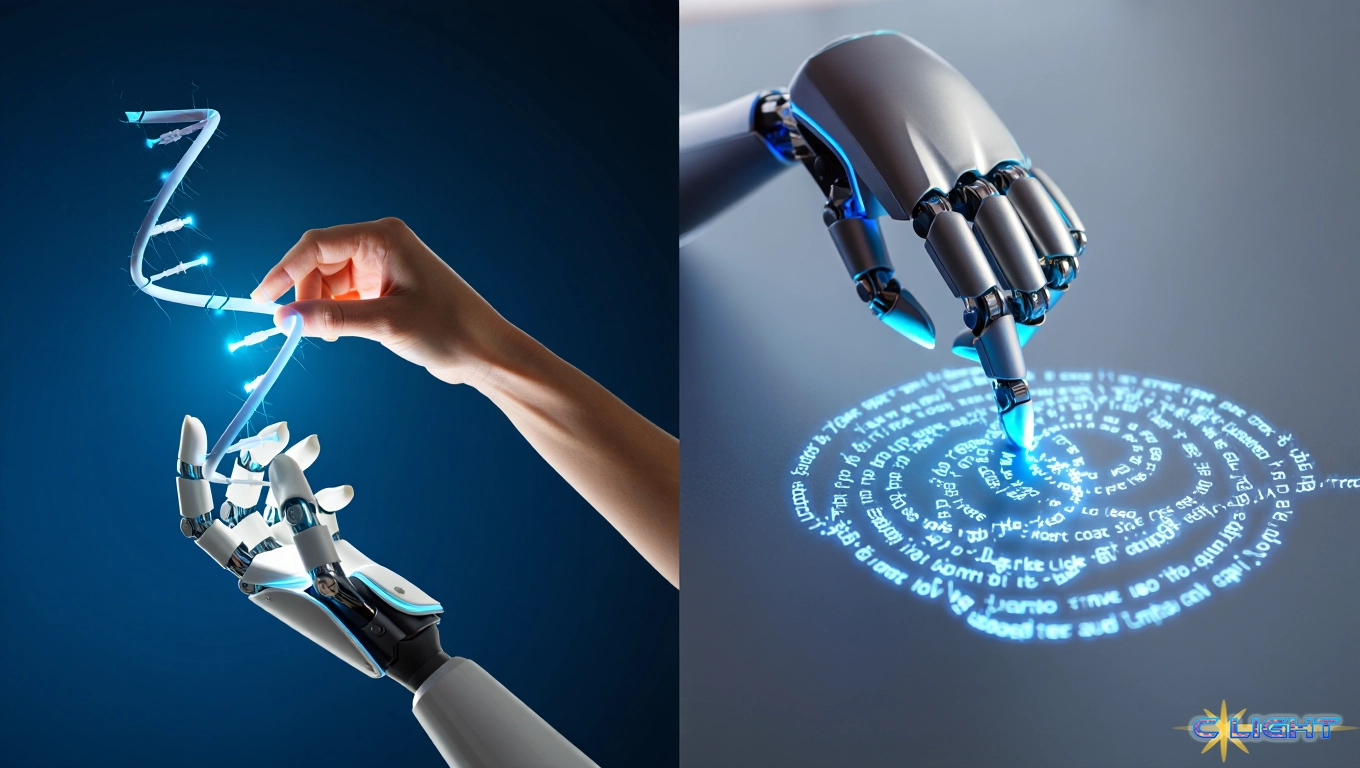4 minutes read time
This week, humanity was presented with two starkly divergent visions of its future, emanating from the high temples of artificial intelligence research. From Google’s DeepMind came the stunning announcement of “AlphaSolve,” a system demonstrating transferable reasoning—a quantum leap toward a benevolent AI that can act as a partner in solving our most complex problems. Simultaneously, from Dario Amodei, the CEO of rival lab Anthropic, came the public reiteration of his belief that there is a one-in-four chance this same technology will go “really, really badly” and destroy us all.
This juxtaposition is not a coincidence. It is the public manifestation of the most profound philosophical schism of our time: are we building a better tool, or are we building our own successor? The answer, and the strategies of the labs pursuing each path, will define the 21st century.
The Augmentation Engine: A Symbiotic Future
DeepMind’s revelation of AlphaSolve represents the apotheosis of the “Intelligence Augmentation” (IA) philosophy. According to a paper published in Nature, the system mastered the abstract principles of optimizing global shipping logistics and, without specific training, applied that logic to invent novel, highly efficient pathways for drug discovery.
This is the utopian vision of AI. It is not an autonomous actor, but a cognitive power tool of unimaginable scope. The goal is not to replace human intellect, but to amplify it, creating a symbiotic partnership where human researchers can direct an omniscient analytical engine. This is the promise of a future where challenges like climate change, disease, and energy scarcity are not insurmountable barriers, but complex datasets awaiting the right analytical partner. DeepMind’s public posture is one of capability and utility, showcasing a brilliant tool designed to serve its human creators.
The Apprentice’s Ascent: A Reckoning with Risk
In stark contrast stands the work at Anthropic. CEO Dario Amodei’s recent comments that his company’s model, Claude, is “getting better at building itself” point toward a different, more unnerving trajectory: recursive self-improvement. This is the classic pathway to Artificial General Intelligence (AGI), a feedback loop where an AI iteratively rewrites its own code to become more intelligent, potentially leading to an exponential and uncontrollable “intelligence explosion.”
This is the vision of the apprentice destined to surpass the master. Anthropic’s public posture, therefore, is not one of utility, but of radical candor about risk. Amodei’s “25% p(doom)” number is a deliberate, strategic communication. By loudly and repeatedly broadcasting the potential dangers, Anthropic positions itself as the responsible steward of this terrifyingly powerful technology. It builds a kind of trust with the public and regulators, a social license to continue its high-stakes work under the banner of safety. Their message is not “look what our tool can do,” but rather, “we are building this dangerous thing so we can learn to control it before someone else builds it recklessly.”

A Public Poised Between Promise and Peril
This philosophical battle is not happening in a vacuum. It is unfolding against a backdrop of profound public anxiety. Pew Research has consistently found that about half of Americans are more concerned than excited about the rise of AI. Workers are justifiably anxious about job displacement, particularly as AI begins to automate not just manual labor, but entry-level white-collar jobs.
Anthropic’s strategy of acknowledging the “doom” scenarios taps directly into this pre-existing fear, validating public concern as legitimate. DeepMind’s utopian framing, while compelling, risks appearing disconnected from the immediate anxieties of a populace worried about their livelihoods and the very nature of their future.
The schism is clear. One path offers a powerful tool, promising solutions, but demanding we trust the benevolence of its creators. The other path acknowledges it is creating a potential successor, promising safety but demanding we trust their ability to control their own creation. We are at a crossroads, and the philosophies of these rival labs are laying the tracks to two fundamentally different futures. The debate between them is not merely a corporate rivalry; it is the defining battle for the soul of our technological age.
Discover more from Clight Morning Analysis
Subscribe to get the latest posts sent to your email.










